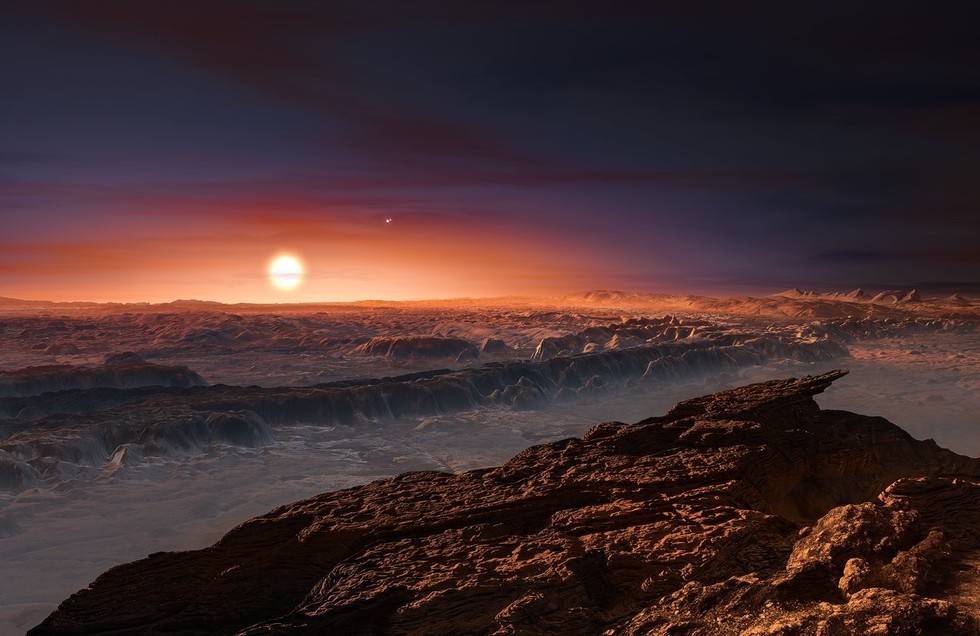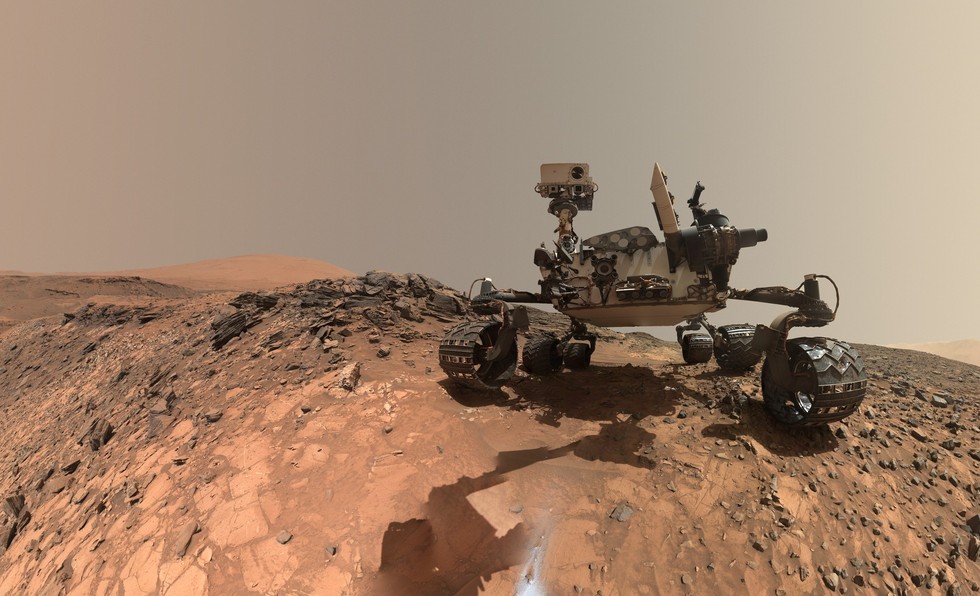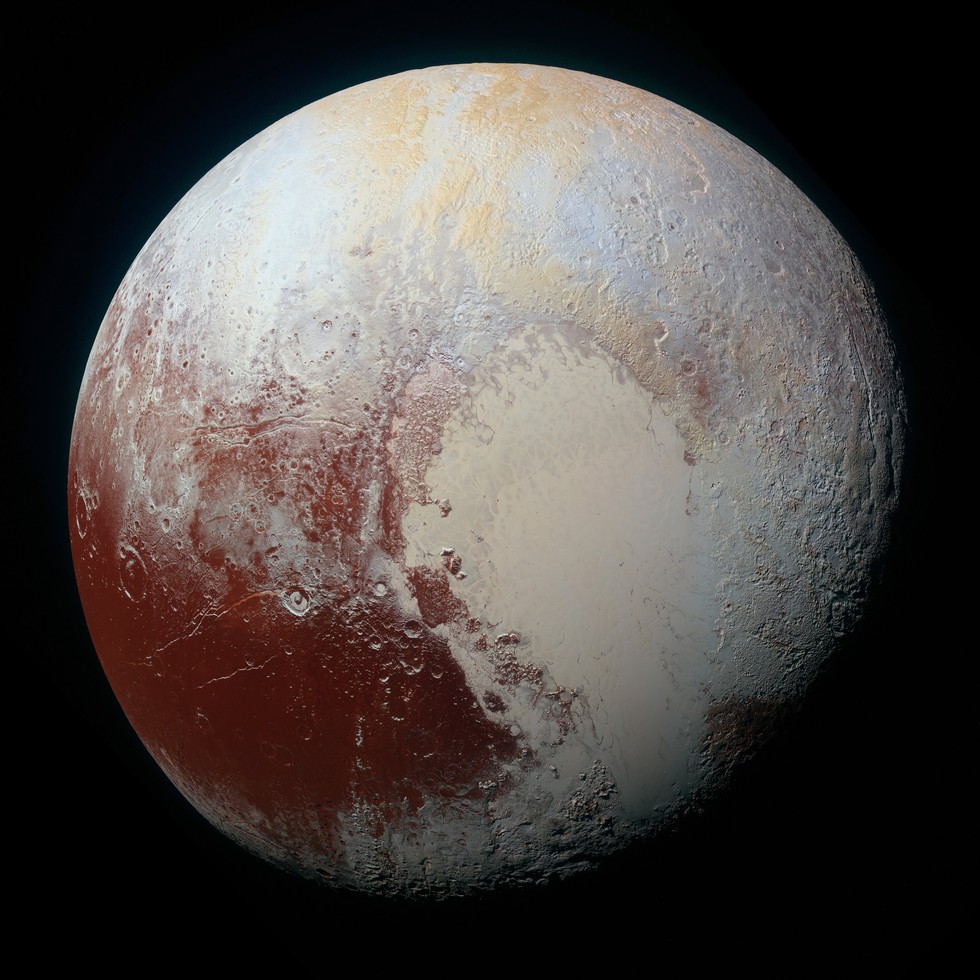Space Art Makes Alien Worlds Feel Like Home

Anyone who watched Bugs Bunny cartoons or read Life Magazine in the 1950s could already imagine space, even though we hadn't visited it yet. Artists had nifty visualizations of planets near and far, based on observations we picked up on telescopes from the time.
Zoom forward a couple of generations, and everything has changed. NASA has flown by every planet in our solar system and several smaller bodies besides. One major milestone was achieved last year when Pluto (a former planet) was finally visited by New Horizons, more than 80 years after it was discovered.
RELATED: Exquisite Exoplanetary Art
But one of our greatest achievements is how planetary scientists and space artists make these new worlds seem somewhat familiar to us, argues Lisa Messeri in her new book, "Placing Outer Space."
The science and technology anthropologist, who is based at the University of Virginia, went all over the world to learn more about this phenomenon. She watched people pretending to be Martian astronauts at Utah's Mars Desert Research Station. She visited the famed European Southern Observatory's telescopes in Chile's Atacama Desert, which are uncovering evidence of worlds far beyond our solar system. And she even talked about the importance of Mars to a small group of Silicon Valley folks in the space field.
"The way we visualize other planets absolutely influences how we think about what a place is," Messeri told Discovery News.
RELATED: Psychedelic Dwarf: Why Pluto Was Turned Into Pop Art
Breaking space news, the latest updates on rocket launches, skywatching events and more!
In the early days, space artist Chesley Bonestell wanted a new way of presenting Saturn in space, so he did one famous piece of art from the point of view of a rocky moon (pictured top). Today we are now seeing exoplanet art done in the same fashion, Messeri added.
And now some of our dream worlds are becoming reality. In 2015, the first pictures of Pluto flowed in and began a new phase of exploring this dwarf planet. Messeri said that as new pictures or data comes in on distant worlds, it changes our anthropological perception of what these worlds are.
"It certainly means we've sent some element of ourselves, this technology, far into the solar system," she said. "Because of my working with astronomers, I do believe that they now imagine Pluto in a more profound or more specific way and can conjure a more robust imagination as a planetary sense."
Messeri's favorite part of the book is the search for an Earth-like exoplanet, which has particularly consumed astronomers on NASA's Kepler space telescope mission, as well as the aforementioned astronomers in Chile. Over the years, many rocky planets have been identified in the habitable zones of their stars.
RELATED: Space Invaders Take Over California
Messeri spent time in Chile discovering just how hard astronomers must work to learn more about these worlds. "The act of observing is more mundane," she said with a laugh. "I am not a night person, so having to do an all-nighter was in fact incredibly uncomfortable. I loved the astronomers I was there with, and excited to stay up each night chatting, but I also wanted so badly to be asleep."
As a next project, Messeri plans to look at the burgeoning world of virtual reality and how it helps astronomers better learn about other worlds. She added that astronomy changes so rapidly that it's worth revisiting certain topics every five to 10 years to see what developments have happened since. "That change is worth talking about and trying to understand," she said.
Originally published on Discovery News.

Elizabeth Howell (she/her), Ph.D., was a staff writer in the spaceflight channel between 2022 and 2024 specializing in Canadian space news. She was contributing writer for Space.com for 10 years from 2012 to 2024. Elizabeth's reporting includes multiple exclusives with the White House, leading world coverage about a lost-and-found space tomato on the International Space Station, witnessing five human spaceflight launches on two continents, flying parabolic, working inside a spacesuit, and participating in a simulated Mars mission. Her latest book, "Why Am I Taller?" (ECW Press, 2022) is co-written with astronaut Dave Williams.


